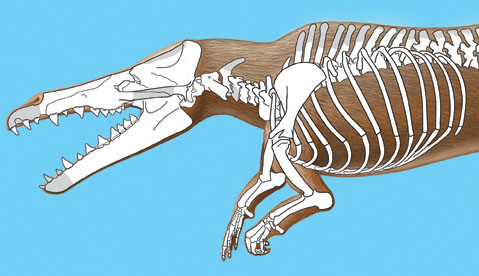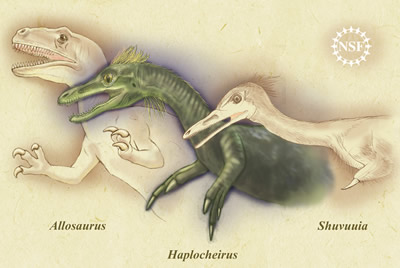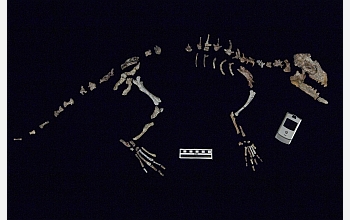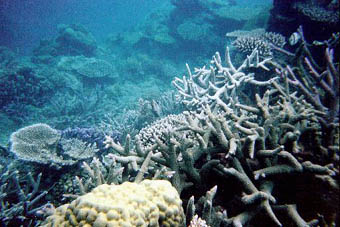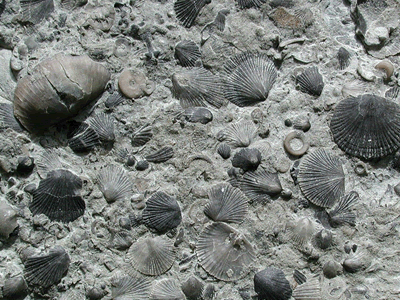Click on image for full size
Courtesy of Dinosaur National Monument
Related links:
Missing Link Between Whales and Four-Footed Ancestors Discovered
Did Life First Form in a Mica Sandwich at the Bottom of an Ancient Sea?
Fossil Record Suggests Insect Assaults Foliage May Increase with Warming Globe
Geologic Findings Undermine Theories of Permian Mass Extinction Timing
What Is a Fossil?
Fossils are evidence of ancient life preserved in sedimentary rocks. On Earth, they are clues to what living things, ecosystems, and environments were like in the past. The oldest fossils are from mats of blue-green algae that lived over three billion years ago. The youngest fossils are from animals that lived before the beginning of recorded history, 10,000 years ago.
Scientists that study fossils know that the types of creatures that lived on the planet at different times in Earth history have changed quite a bit over millions and millions of years. Each unique type of life form, whether alive today or extinct, is called a species. Most fossils are from species that no longer live on the planet because they have become extinct. Many of these extinct species are somewhat similar to species that live today.
Fossils are not always big dinosaur bones or fancy shells like the ones found in museums. In fact, if you think you have never found a fossil, think again! You probably rely on fossils everyday by using fossil fuels such as oil, gas, or coal to power cars, lights, and heat or cool your house. Fossil fuels are organic carbon from ancient plants and marine life that lived millions of years ago. So, every time you pull into a gas station, think about the fossils that are filling the tank!
Body fossils are remains of actual organisms. Most living things never become fossils. It takes special conditions for a fossil to form. Hard parts made of mineral such as shells and bones are much more likely to become body fossils than soft tissues, such as skin, organs, and eyes, which usually decay. This means that animals like jellyfish, which have no bones made of hard mineral, are rarely preserved.
Trace fossils are clues to how ancient animals lived. For instance, if you were to make footprints on the beach today and the beach sand eventually became cemented together forming a rock called sandstone, your footprints would be in the rock as well. They would be trace fossils and evidence that you were once there. This doesn�t happen very often. Think about all the people, dogs, crabs, birds and other animals that walk over a beach each day. Few, if any, of those footprints will become fossils someday. Most of them are washed away by wind and waves. Other examples of trace fossils include crab burrows, dinosaur bite marks, and bear claw starches on the walls of caves.









